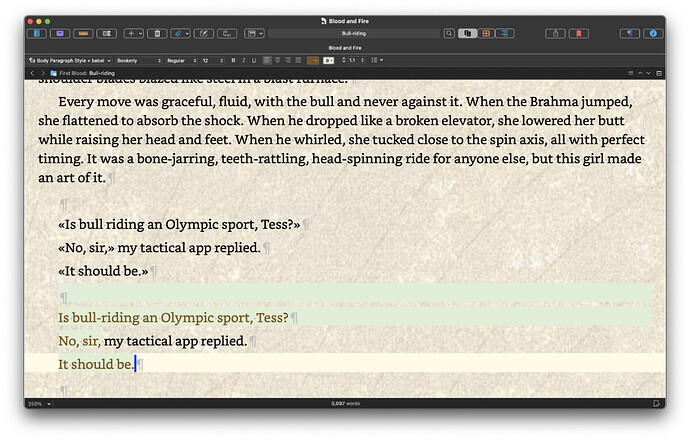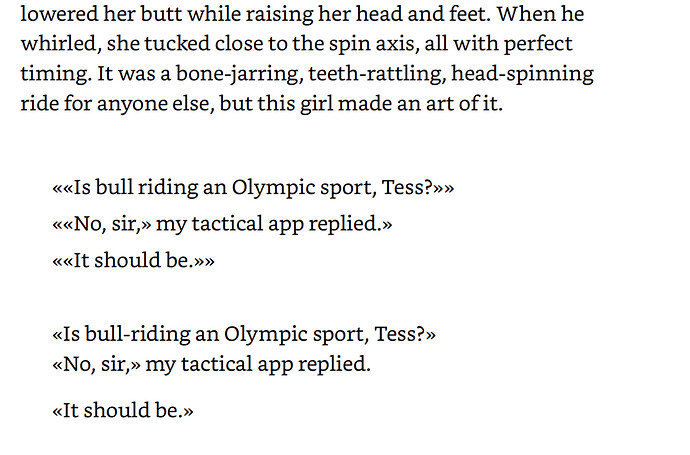I’ve arrived at a point with my current project where I thought I would give the compiler a go. I’ve always avoided it in the past because it seemed to require too much up front effort. I gave it a go and selected the ‘Modern’ format and compiled to rtf and odt outputs.
The first thing I noticed was the rtf file was 32023 KB as compared with the odt file’s 15919 KB. Then I noticed that all the bold text had disappeared and out of 273 images and their file names, all nicely center aligned in Scrivener, only 6 retained their place in the odt and rtf outputs. All the rest became left aligned. Similarly, no italics survived the compile.
Both output files surprised me with their page styles. Each had a default + 41 converted page styles all of which were A4 whereas my project was Letter. Generally, any book I write has maybe 3 or 4 page styles, maximum so it was a new discovery to see how Scrivener could create so many in one text.
The worst problem which made the outputs unusable for me was the garbage resulting from the compiling of lists. My lists were mostly unnested because I never did find a fool proof way of producing a nested list in Scrivener whether ordered or unordered. I know there are several threads on the forum where people have problems with lists.
The worst of the list corruptions was where a bullet point was longer than a line. The compile process turned some of these long lines into one proper line (albeit minus the bullet) and then the rest was typed into a vertical column in the right hand margin with the column being only 3 characters wide. So in some cases, the spillage from the first line occupied a page or more of output.
Not all lists were like that. Some had the bullets in the left hand margin. Some lost the bullets completely. Some had the bullet + 1 character in the right hand margin.
I redid the two compiles without changing any settings and got substantially the same results except for the worst case of those pages of 3 character columns. The second try was ok from that point of view and gave output documents which were around 9 pages shorter. The other problems with the lists remained as did all those page styles and the loss of bold, centre and italics.
I supposed there must be some over-riding of project settings in the built-in Modern format which caused me to get an A4 output but there didn’t appear to be any obvious listing of the parameters of these built-in formats. The only way I could check was to duplicate and edit the Modern format and my suspicions were correct - at least on page size.

